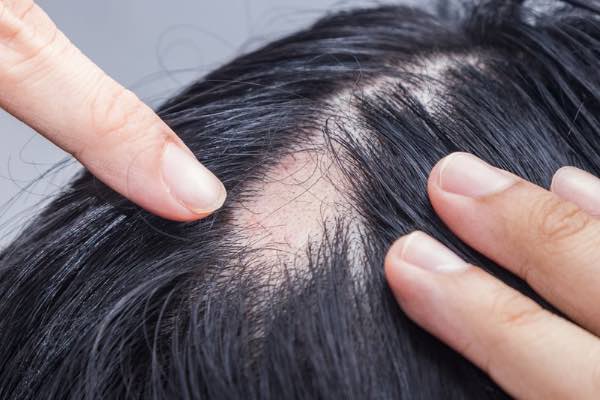
A Hair Transplant to Restore Hair Lost to Scarring Alopecia

October 27, 2025 by
avrupahairtransplant
Scarring alopecia, also known as cicatricial alopecia, is a condition that results in permanent hair loss due to inflammation that destroys hair follicles and replaces them with scar tissue. Unlike other forms of alopecia, scarring alopecia causes hair loss and irreversible damage to the scalp, leaving behind visible scars. However, a hair transplant offers a promising solution to restore hair in these affected areas, helping individuals regain their hair and confidence. Here’s why more people are considering hair transplants to treat scarring alopecia.
What is Scarring Alopecia?
Scarring alopecia is a group of rare disorders characterized by permanent hair loss due to the destruction of hair follicles. The condition can affect men and women of all ages and can result from various factors, including autoimmune disorders, infections, or other inflammatory conditions. As the follicles are destroyed, they are replaced by scar tissue, making hair regrowth impossible without intervention.
Why Consider a Hair Transplant for Scarring Alopecia?
1. Restoring Permanently Lost Hair
The key challenge with scarring alopecia is that the damage to the hair follicles is irreversible, meaning the hair will not grow back on its own. A hair transplant provides a way to restore hair in these scarred areas by transplanting healthy follicles from unaffected areas of the scalp.
2. Improving Scalp Appearance
Scarring alopecia often leaves behind visible patches of scar tissue that can be aesthetically displeasing. A hair transplant can help cover these scars, improving the overall appearance of the scalp and creating a more uniform and natural look.
3. Enhancing Self-Confidence
Hair loss due to scarring alopecia can be particularly distressing, as it often results in noticeable and permanent bald patches. A successful hair transplant can help restore a more normal appearance, boosting self-esteem and allowing individuals to feel more comfortable in their skin.
The Hair Transplant Procedure for Scarring Alopecia
1. Consultation and Assessment
The first step in addressing scarring alopecia with a hair transplant is a thorough consultation with a qualified surgeon. During this consultation, the surgeon will assess the extent of the scarring, determine the condition’s stability, and develop a personalized treatment plan tailored to your needs.
2. Follicle Extraction
Healthy hair follicles are typically harvested from a donor area of the scalp where hair is more resilient. Using advanced techniques such as Follicular Unit Extraction (FUE), individual hair follicles are carefully extracted to minimize additional scarring in the donor area.
3. Follicle Implantation
The extracted follicles are meticulously implanted into the areas affected by scarring alopecia. The surgeon will precisely place each follicle to ensure that the new hair grows in a natural direction and density, seamlessly blending with the surrounding hair.
4. Recovery and Results
Recovery from a hair transplant to treat scarring alopecia is generally straightforward, with most patients returning to normal activities within a few days. Initial hair growth can typically be observed within a few months, with full results appearing after 9 to 12 months.
Benefits of Treating Scarring Alopecia with a Hair Transplant
1. Natural-Looking Results
A well-executed hair transplant can restore a natural appearance to areas affected by scarring alopecia. The new hair will grow just like your natural hair, providing a seamless and long-lasting solution.
2. Permanent Hair Restoration
Unlike other treatments, which may only offer temporary improvements, a hair transplant provides a permanent solution. Once the transplanted follicles have established themselves, they will continue to grow hair for the long term.
3. Boost in Confidence and Well-Being
The psychological impact of scarring alopecia can be significant, affecting one’s self-image and quality of life. A hair transplant can help improve self-esteem and overall well-being by restoring hair in the affected areas, allowing individuals to feel more confident and comfortable in their appearance.
Conclusion
If you’re struggling with hair loss due to scarring alopecia, a hair transplant could be the answer you’ve been looking for. This advanced procedure offers a permanent and natural-looking solution to restore hair in scarred areas, helping you regain confidence and improve your quality of life. With the expertise of a skilled surgeon and a tailored approach, you can achieve the desired results and reclaim your hair and self-assurance. Don’t let scarring alopecia define you—consider a hair transplant and take the first step towards a renewed sense of self.
Written By
avrupahairtransplant
Avrupa Hair Transplant Clinic, Istanbul’s trusted name since 2006, transforms hair restoration with cutting-edge techniques like FUE, DHI, and Sapphire, crafting natural, lasting results. With over 40,000 success stories and a collection of international awards, Avrupa blends innovation with artistry, delivering personalized care that redefines confidence for clients worldwide.